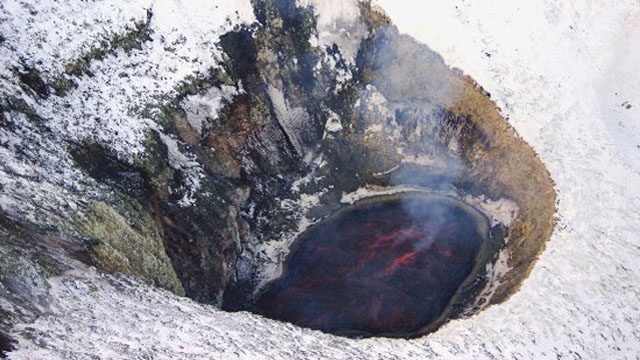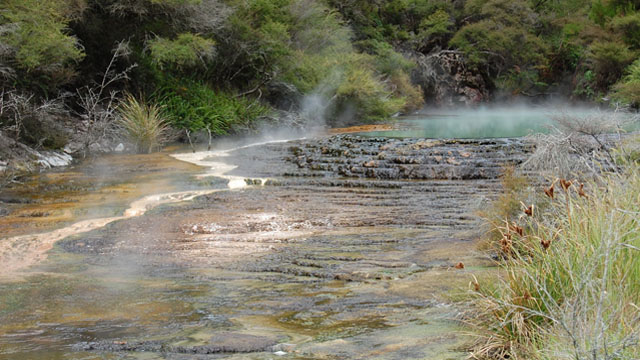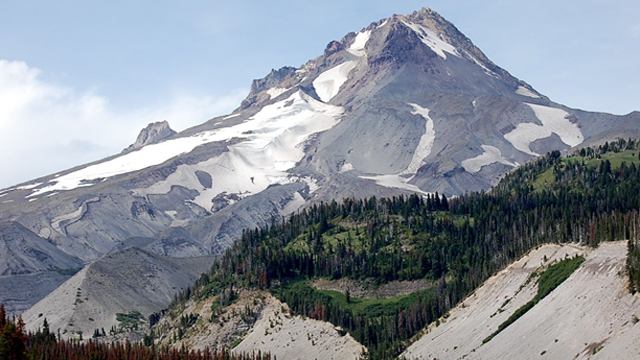Eruptions Mailbag for June 2009

nChaiten in Chile erupting in January 2009. Even after over a year of activity, Eruptions readers are still captivated by the volcano.
nn
Thanks for sending me your questions about volcanoes and volcanism. I’ll try to tackle some hear – but as always, keep the questions coming! Send them to 
nn
For those of you who have submitted a question but don’t see the answer here, do not fret. Likely it just means that I needed to do a little more research into the question and will get to it in a later mailbag!
nn
So, without further ado …
nn
Mark M.: Here in the Appalachians we have very dense crystalline rock (amongst everything else). I have no doubt in my mind that these mountains had a very explosive past. Is it correct that the more crystalline the igneous rock, the more powerful the eruption?
nErik: The Appalachians (the run up and down the eastern seaboard of North America) do indeed have a long record of magmatism and volcanism in them, so of which dates back over 300 million years. None of it is recent. Heck, none of it is younger than a few hundred million years, but they are there, telling us about volcanism and magmatism during formation of the Appalachians.
nn
As for the crystallinity, the answer to that is “yes and no”. If you are looking at a lava, the more crystalline a magma becomes, the more likely it is to erupt explosively, mostly because increasing the crystal content will increase the viscosity (stickiness) of the lava. The stickier the lava is, the more resistant to flow it becomes, and the more likely it will erupt explosive as gases dissolved in the magma try to escape during eruption (i.e., fragmentation). There are some exceptions as viscous lava domes can erupt passively and have high crystal contents, but many of those are from lavas that are already substantially degassed (like the 2004-08 domes at Mt. Saint Helens). So that’s the “yes” part. The “no” part is that if the igneous rock cooled underground (“plutonic”), then it will tend to have lots of crystals – in fact, the whole rock should be crystals. This type of rock never erupted, but is, indeed, a crystal-rich igneous rock. Granite is the more familiar example – lots of crystals, but never erupted.
nn
Simon E: What makes Chaiten such a unique eruption, what forces are driving the continuing dome building and what are the chances of major dome collapse leading to possible caldera forming eruption?
nErik: That is a doozy, Simon. The eruption of Chaiten is unique because it is one of the very few rhyolite eruptions that has occurred in the last 300 years (so, since the birth of modern geology). Combined with the fact that it was almost out-of-the-blue and is still going strong after over 14 months, it lands itself in my list of the top 5 eruptions in the last few hundred years. The dome building is being driven by the rhyolite magma under the vent continues to rise and extrude onto the domes. This magma is likely being driven by buoyant forces that work on any magma, things like the dissolved gases, the density difference between the surrounding crust and the magma, the heat of the magma (amongst a myriad of other factor that aren’t well understood). Of course, the biggest factor might be that there is still eruptible magma in the system that wants to escape, and kind of getting off a busy bus, people will continue to come out until its empty (or at least until the magmatic system stagnates).
nn
The dome collapses – the type that generate pyroclastic flows like we see at Soufriere Hills – are not likely to generate a “caldera collapse” eruption. However, if you look at the history of some other caldera collapses, there is precedent for large dome-building events that preceded the caldera-forming event. The best example is that of Crater Lake in Oregon, where rhyodacite eruptions of the Llao Rock dome and Cleetwood Cove flows preceded the climatic eruption by tens to hundreds of years. Now, the direct connection between these domes and the climactic eruption is not direct, but all the dome building at Chaiten could (and I stress could) be just the “throat clearing” before a larger event. Or, it could just be the main event, like what happened at the Mono/Inyo domes near Long Valley in California, Glass Mountain in Medicine Lake in California or the Big Obsidian Flow at Newberry Caldera in Oregon – rhyolite domes that didn’t lead to a bigger event.
nn
Guillermo E: In the case of Chaitén, after 14 months of continuous eruption, it is still possible that the dome “explode” because of pressure under the dome?
nErik: This follows up on Simon’s questions. The threat of an explosion at the new domes at Chaiten is more dependent on a release of pressure rather than increasing pressure. Check out my post of the dome at Redoubt that describes the process of a “dome collapse” explosion. That is the real threat at Chaiten.
nGuillermo E: The lahars at Chaiten are only related to ice molten by eruptions or the mudflows of ash by heavy rain are lahars too?
nErik: The line between lahars and mudflows is a little murky. Lahars formed by melting of ice during the eruption are clearing lahars – volcanically generated mass movements with a matrix of water and fine material (i.e., mud). However, you can also remobilize ashy deposits very easily with a heavy rain, and although these flows are not directly attributable to an eruption per se, they are made of dominantly volcanogenic (from the volcano/eruption) material. This was a major problem after the eruption of Mt. Pinatubo in the Philippines in 1991, when the ash from the eruption was remobilized into new flows, causing flooding and more destruction in areas far from the volcano. These flows were also called “lahars”. However, the term “mudflow” would apply once the flows had made it far enough downstream where the component of the flow not derived from the volcanic products is greater than that of volcanic products.
nGuillermo E: What happened to the earthquakes in Saudi Arabia?
nErik: Thanks to Eruptions readers who have sent me some info, we have some idea: Evacuees have yet to be allowed back to the Al-Ais region where the earthquakes have been centered. Even now they still have been registering earthquakes over M4 as recently as June 23. The source of the seimicity still not clear – it very well could be magma moving below Harrat Lunayyir, but there is still a chance it could be fault and fluid related instead. However, field teams are recording hundreds of earthquakes a day, even now in late June. That leaves the 30,000 evacuee waiting for the Saudi Geological Survey to decide when it might be safe to return.
nn
Wayne C.: What is the story behind the ash and lava that comes spitting out of the volcano? From how deep in the Earth does the lava begin its journey to the surface, and how long does it take it to get there? Does the answer depend upon the type of volcano?
nErik: Ah yes, the proverbial $10,000,000 question. Well, questions. A lot of the answers you are seeking, Wayne, are not well constrained when it comes to all volcanoes. In general (and I mean general), most magma comes from the base of the crust or upper mantle, however, that depth can vary from a few kilometers to almost 100 kilometers, depending on the location and tectonic setting. Heck, some magma are sourced hundreds of kilometers below the surface (e.g., kimberlites). So, to pinpoint a specific depth is tough. To add to this, the magma that leaves the source can be very, very different than the magma that erupts at the surface. All sorts of things can happen during its journey. One group of processes that happens in the Andes is called “MASH”, which stands for “Melting Assimilation Storage and Homogenization” (Hildreth and Moorbath, 1988). It sounds awfully Borg-like, but what it means is the magmas that are in the lower crust in the Andes experience a process where part of the crust in which they reside melts, assimilates with the magma (i.e., mixes), the magma is stored and crystallizes and during this process, the magmas with homogenize through time. To make a long story short, a lot can happen from the “source” of a magma to an eruption … and the time it takes to do it is a hotly contest arena in igneous petrology (the study of igneous rocks).
nn
Jodie M.: Do you know of any other streaming video cams aimed at active volcanoes, geysers, etc.?
nErik: How about it Eruptions readers? Got any great webcams of volcanoes we haven’t mentioned so far? Post them here!
nn
—-
nn
That is all for now. I’ll be doing another mailbag in a few weeks where I will tackle some of the other great questions that you sent. Enjoy the weekend!




